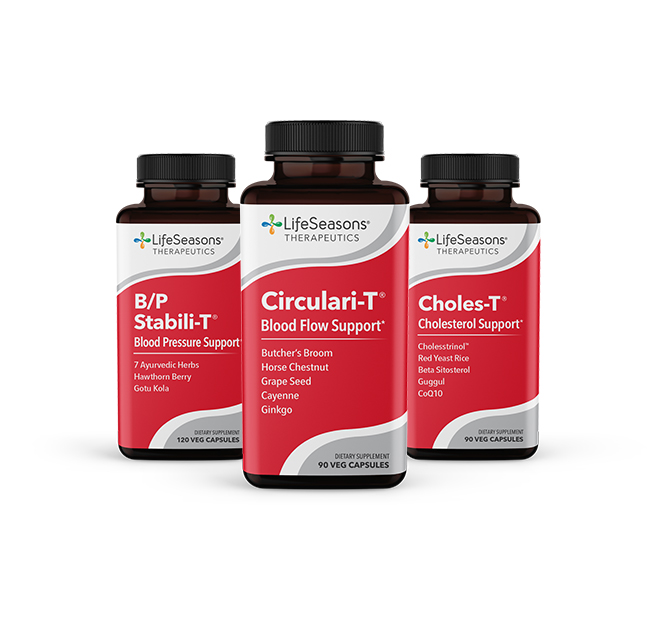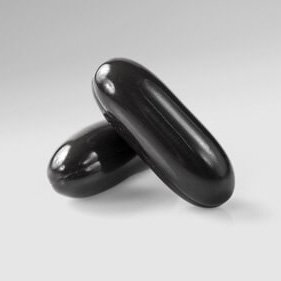WHAT ARE THE ADRENAL GLANDS AND WHY ARE THEY IMPORTANT?
Adrenal glands are small triangle-shaped glands located on the top of the kidneys. Despite their size, these small glands have a huge effect on the functioning of the rest of the body. Adrenal glands secrete key hormones that are involved in the regulation of metabolism, water balance, stress, and sexual function. As adrenal hormones circulate through the body, they affect our overall mental and physical health, our energy levels, and the functioning of our organs (1).
Hormones produced by the adrenal glands include*:
- Cortisol is the main hormone produced by the adrenal glands (2). It is released in large amounts in response to stress and plays a key role in the body’s “fight-or-flight” response. Cortisol is more than just a “stress hormone”, however, and low-level secretion of this hormone is important for the regulation of blood sugar, blood pressure, metabolism, water balance, inflammation, and the sleep/wake cycle (3). Cortisol has also been shown to have a direct effect on the:
- Cardiovascular system – it maintains normal blood pressure and myocardial function, and ensures that arterioles are responsive to other hormones like catecholamine.
- Central nervous system – it alters the behavior of neurons thereby affecting mood.
- Kidneys – it increases blood flow to specific areas of the kidney thereby speeding up waste filtration and increasing phosphate excretion (4).
- Dehydroepiandrosterone (DHEA) and Dehydroepiandrosterone Sulphate (DHEA-S) are some of the most abundant circulating steroid hormones in the human body. They are weak androgens but are also precursor hormones that are converted into estrogens and testosterone in the ovaries and testes respectively (3).
- Aldosterone is involved in the maintenance of sodium and potassium balance throughout the body. This balance is important for blood pH and for blood pressure. Aldosterone reception by the kidneys induces reabsorption of sodium and excretion of potassium (5).
- Epinephrine (Adrenaline) is typically released during periods of acute stress, to initiate the “fight-or-flight” response. Its main function is to increase cardiac output (i.e. heart rate and contraction) and increase glucose levels in the blood (6).
- Norepinephrine (Noradrenaline) is a “stress hormone” that functions as a neurotransmitter in the sympathetic nervous system. It stimulates receptors in the brain that, in turn, initiate constriction of blood vessels; and muscles in the iris, bladder, and gastrointestinal sphincters (7).
SYMPTOMS AND RISK FACTORS FOR ADRENAL DISORDERS
There are a few disorders associated with direct dysfunction of the adrenal gland. Many of these result in insufficient or excessive secretion of adrenal hormones (8). Adrenal disorders in this category include*:
Addison’s Disease
Addison’s disease, commonly referred to as primary adrenal insufficiency, is caused by the destruction of the outer layer of the adrenal gland. Loss of this adrenal tissue results in a deficiency in glucocorticoid (i.e. cortisol) and mineralocorticoid (i.e. aldosterone) (9). Because there are few visible symptoms of early-stage Addison’s disease, it is often not detected until it has progressed to a life-threatening stage (10). Many symptoms of adrenal insufficiency are non-specific, progress slowly, and are often ignored.
Symptoms of Addison’s Disease
- Gastrointestinal disturbances – nausea, vomiting, diarrhea
- Loss of appetite
- Unusual craving for salt
- Weight loss
- Vitiligo
- Fatigue and malaise
- Depression
- Increase in skin pigmentation (9,10)
Risk Factors for Addison’s Disease
Addison’s disease is usually the consequence of an autoimmune disorder in which the immune system slowly attacks and destroys the outer layer of the adrenal glands. Having a family history of Addison’s disease or other autoimmune diseases is considered a risk factor. Other risk factors include:
- Sepsis (11)
- Celiac Disease (12)
- Use of corticosteroids (13)
- Tuberculosis (14)
- Being HIV positive (15)
- Adrenal hemorrhages (16)
Cushing’s Syndrome
Cushing’s syndrome is a rare disease that results from prolonged exposure to excess glucocorticoids (i.e. cortisol) in the body. It can be caused by excessive topical or internal administration of glucocorticoids (Exogenous Cushing’s syndrome), or excessive internal production of glucocorticoids (Endogenous Cushing’s syndrome) (17,18). Endogenous Cushing’s syndrome is most often the result of adrenal tumors or excessive production of adrenal-stimulating hormones by the pituitary gland (18).
Cushing’s syndrome is related to a decreased quality of life and increased mortality rates (19). The symptoms of the syndrome vary depending on the level of hypercortisolism, and, in the case of mild Cushing’s syndrome, they may be entirely non-specific (19).
Symptoms of Cushing’s Syndrome
- Excess fat accumulation in the abdomen and face (19)
- Wide purple stretch marks (19)
- Neuropsychiatric disorders such as depression, mania and anxiety; and reduced cognitive functions leading to insomnia and reduced libido (20,21)
- Weight gain and slow growth in children (22,25)
- Muscle weakness and atrophy (23)
- Development of diabetes (24)
Risk Factors for Cushing’s Syndrome
- Central obesity
- ACTH-secreting tumor outside the pituitary gland (25)
- Taking corticosteroid medications
- Pituitary gland tumors
- Other adrenal gland diseases (26)
Conn’s Syndrome
Conn’s syndrome, known as primary hyperaldosteronism, is the excessive production of aldosterone by the adrenal glands. This is usually caused by aldosterone-producing tumors (cancerous or non-cancerous) or familial aldosteronism (27).
Hypertension is a common symptom of Conn’s (28). This is due to the fact that aldosterone causes sodium reabsorption in the kidney. This reabsorption leads to increased sodium levels in the blood and corresponding increases in blood water levels to compensate. With the increased water comes an increase in pressure on the blood vessels (i.e. hypertension) (27).
Symptoms of Conn’s Syndrome
- Hypertension
- Hypokalemia (low blood potassium)
- Hypervolemia (fluid overload in the body)
- Metabolic alkalosis (body pH that is too basic) (29)
Risk Factors for Conn’s Syndrome
- A family history of Conn’s syndrome is the only reported risk factor for this disorder (29)
*While these lists do cover common adrenal hormones and a few of the more common adrenal disorders they are not all-inclusive. For more information about adrenal disorders: 1. Talk with your doctor or endocrinologist 2. Visit the Hormone Health Network website 3. Visit the National Institute of Child Health and Human Development adrenal gland disorders page
ADRENAL DISORDER FACTS AND STATISTICS
Addison’s Disease
- In 2018, estimates show that approximately 1 in 100,000 persons in the United States has Addison’s disease (30).
Cushing’s Syndrome
- In 2017, estimates showed that almost 13 million people are affected by Cushing’s syndrome on an annual basis (31).
Conn’s Syndrome
- In 2017, reports indicated that 6% to 20% of adults who have hypertension also have Conn’s syndrome (27).
MEDICAL TREATMENT OF ADRENAL DISORDERS
Addison’s Disease
Treatment Addison’s disease primarily focusses on drugs to replace the hormones that the adrenal gland is failing to produce
- Fludrocortisone to replace aldosterone. Side effects include irregular heartbeat, blurred vision, nausea, unexplained fever or a sore throat (32).
- Hydrocortisone to replaces cortisol. Side effects include depression, blurred vision, fever and chills, nausea and vomiting, uneven heartbeat, headache, weight gain around neck and face (33).
Cushing’s Syndrome
Surgery is recommended if Cushing’s syndrome is due to an adrenal tumor (34). In cases where surgery is not feasible, some medications can be used to suppress cell growth or inhibit adrenal hormone production:
- Mitotane. Side effects include gastrointestinal, neurological, or liver problems; and possible adrenal insufficiency (35).
- Ketoconazole. Side effects include liver toxicity, gastrointestinal problems, and hypogonadism in men (35).
- Metyrapone. Side effects include swelling due to excess fluid retention, hypertension, acne, or low blood potassium (35).
- Etomidate. Side effects include sporadic jerky contraction of muscles, nausea and vomiting (36).
Conn’s Syndrome
- Eplerenone. Side effects include elevated triglycerides, too much potassium in the blood, pain in the breasts, or abnormal vaginal bleeding (37)
NATURAL WAYS TO SUPPORT HEALTHY ADRENAL GLANDS
Adrenal hormone levels in the body can be affected by lifestyle, medicines, and supplements.
Practices to Support Adrenal Health:
- Lower stress levels
- Increase physical activity
- Minimize exposure to toxins and try to live in a healthy environment (38,39)
Natural Supplements that Support Adrenal Health:
- Rhodiola (40,41)
- Holy Basil (42,43)
- Schizandra (44,45)
- Ashwagandha (46,47)
- Vitamin B-6 (48,49)
REFERENCES
- Adrenal glands – National Library of Medicine. PubMed Health. 2018. https://www.ncbi.nlm.nih.gov/pubmedhealth/PMHT0022159/. Accessed March 18, 2018.
- Raff H, Sharma S, Nieman L. Physiological basis for the etiology, diagnosis, and treatment of adrenal disorders: Cushing’s syndrome, adrenal insufficiency, and congenital adrenal hyperplasia. Compr Physiol. 2014:739-769. doi:10.1002/cphy.c130035.
- Adrenal glands. Johns Hopkins Medicine Health Library. https://www.hopkinsmedicine.org/healthlibrary/conditions/endocrinology/adrenal_glands_85,p00399. Accessed June 11, 2018.
- Nussey S, Whitehead S. The adrenal gland – Endocrinology: an integrated approach. Oxford: BIOS Scientific Publishers. 2001. Available at: https://www.ncbi.nlm.nih.gov/books/NBK26/. Accessed March 18, 2018.
- Schiffrin E. Effects of aldosterone on the vasculature. Hypertension. 2006;47(3):312-318. doi:10.1161/01.hyp.0000201443.63240.a7.
- Rogers K. Epinephrine. Encyclopedia Britannica. 2018. https://www.britannica.com/science/epinephrine. Accessed June 11, 2018.
- Norepinephrine. Pubchemncbinlmnihgov. 2018. https://pubchem.ncbi.nlm.nih.gov/compound/norepinephrine#section=Top. Accessed March 18, 2018.
- Overview of adrenal function – endocrine and metabolic disorders. Merck Manuals Professional Edition. 2018. https://www.merckmanuals.com/professional/endocrine-and-metabolic-disorders/adrenal-disorders/overview-of-adrenal-function. Accessed March 18, 2018.
- Burton C, Cottrell E, Edwards J. Addison’s disease: identification and management in primary care. British Journal of General Practice. 2015;65(638):488-490. doi:10.3399/bjgp15x686713.
- Ten S, New M, Maclaren N. Addison’s disease 2001. The Journal of Clinical Endocrinology & Metabolism. 2001;86(7):2909-2922. doi:10.1210/jcem.86.7.7636.
- Munir S, Waseem M. Addison disease. Treasure Island: StatPearls Publishing. 2017. https://www.ncbi.nlm.nih.gov/books/NBK441994/. Accessed March 18, 2018.
- Elfström P, Montgomery S, Kämpe O, Ekbom A, Ludvigsson J. Risk of primary adrenal insufficiency in patients with celiac disease. The Journal of Clinical Endocrinology & Metabolism. 2007;92(9):3595-3598. doi:10.1210/jc.2007-0960.
- Sannarangappa V, Jalleh R. Inhaled corticosteroids and secondary adrenal insufficiency. Open Respir Med J. 2015;8(1):93-100. doi:10.2174/1874306401408010093.
- Namikawa H, Takemoto Y, Kainuma S et al. Addison’s disease caused by tuberculosis with atypical hyperpigmentation and active pulmonary tuberculosis. Internal Medicine. 2017;56(14):1843-1847. doi:10.2169/internalmedicine.56.7976.
- Eledrisi M, Verghese A. Adrenal insufficiency in HIV infection: a review and recommendations. Am J Med Sci. 2001;321(2):137-144. doi:10.1097/00000441-200102000-00005.
- Bhandari S, Agito K, Krug E. Bilateral adrenal hemorrhage in polycythemia vera. J Community Hosp Intern Med Perspect. 2016;6(4):32416. doi:10.3402/jchimp.v6.32416.
- Feelders R, Sharma S, Nieman L. Cushing’s syndrome: epidemiology and developments in disease management. Clin Epidemiol. 2015:281. doi:10.2147/clep.s44336.
- Hopkins R, Leinung M. Exogenous Cushing’s syndrome and glucocorticoid withdrawal. Endocrinol Metab Clin North Am. 2005;34(2):371-384. doi:10.1016/j.ecl.2005.01.013.
- Nieman L. Cushing’s syndrome: update on signs, symptoms and biochemical screening. Eur J Endocrinol. 2015;173(4):M33-M38. doi:10.1530/eje-15-0464.
- Pereira A, Tiemensma J, Romijn J. Neuropsychiatric disorders in Cushing’s syndrome. Neuroendocrinology. 2010;92(1):65-70. doi:10.1159/000314317.
- Starkman M and Schteingart D. Neuropsychiatric manifestations of patients with Cushing’s syndrome – relationship to cortisol and adrenocorticotropic hormone levels. Arch Intern Med. 1981;141(2):215-219. doi:10.1001/archinte.1981.00340020077021.
- Magiakou M, Mastorakos G, Oldfield E et al. Cushing’s syndrome in children and adolescents – presentation, diagnosis, and therapy. New England Journal of Medicine. 1994;331(10):629-636. doi:10.1056/nejm199409083311002.
- Mandel S. Steroid myopathy. Postgrad Med. 1982;72(5):207-215. doi:10.1080/00325481.1982.11716260.
- Pivonello R, De Leo M, Vitale P et al. Pathophysiology of diabetes mellitus in Cushing’s syndrome. Neuroendocrinology. 2010;92(1):77-81. doi:10.1159/000314319.
- Saranapala M, Torpy D. Cushing’s syndrome versus simple obesity: how can a needle be found in the haystack?. Endocrinology Today. 2015;4(1):30-35.
- Sharma S, Nieman L. Cushing’s syndrome: all variants, detection, and treatment. Endocrinol Metab Clin North Am. 2011;40(2):379-391. doi:10.1016/j.ecl.2011.01.006.
- Parmar M, Bhimji S. Conn syndrome. Ncbinlmnihgov. 2018. https://www.ncbi.nlm.nih.gov/books/NBK459197/. Accessed March 24, 2018.
- Schirpenbach C, Reincke M. Primary aldosteronism: current knowledge and controversies in Conn’s syndrome. Nature Clinical Practice Endocrinology & Metabolism. 2007;3(3):220-227. doi:10.1038/ncpendmet0430.
- Vaidya A and Dluhy R. Hyperaldosteronism. Ncbinlmnihgov. 2018. https://www.ncbi.nlm.nih.gov/books/NBK279065/. Accessed March 24, 2018.
- Addison’s disease. NORD (National Organization for Rare Disorders). 2018. https://rarediseases.org/rare-diseases/addisons-disease/. Accessed March 24, 2018.
- Cushing syndrome. NORD (National Organization for Rare Disorders). 2018. https://rarediseases.org/rare-diseases/cushing-syndrome/. Accessed March 24, 2018.
- Fludrocortisone (oral route). PubMed Health. 2018. https://www.ncbi.nlm.nih.gov/pubmedhealth/PMHT0010328/?report=details. Accessed March 24, 2018.
- Hydrocortisone (by injection) – National Library of Medicine. PubMed Health. 2018. https://www.ncbi.nlm.nih.gov/pubmedhealth/PMHT0010595/?report=details. Accessed March 24, 2018.
- Nieman L and Ilias I. Evaluation and treatment of Cushing’s syndrome. Am J Med. 2005;118(12):1340-1346. doi:10.1016/j.amjmed.2005.01.059.
- Feelders R, Hofland L, de Herder W. Medical treatment of Cushing’s syndrome: adrenal-blocking drugs and ketaconazole. Neuroendocrinology. 2010;92(1):111-115. doi:10.1159/000314292.
- Forman S. Clinical and molecular pharmacology of etomidate. Anesthesiology. 2011;114(3):695-707. doi:10.1097/aln.0b013e3181ff72b5.
- Craft J. Eplerenone (inspra), a new aldosterone antagonist for the treatment of systemic hypertension and heart failure. Baylor University Medical Center Proceedings. 2004;17(2):217-220. doi:10.1080/08998280.2004.11927973.
- Alghadir A and Gabr S. Physical activity and environmental influences on adrenal fatigue of Saudi adults: biochemical analysis and questionnaire survey. J Phys Ther Sci. 2015;27(7):2045-2051. doi:10.1589/jpts.27.2045.
- McEwen B. Central effects of stress hormones in health and disease: understanding the protective and damaging effects of stress and stress mediators. Eur J Pharmacol. 2008;583(2-3):174-185. doi:10.1016/j.ejphar.2007.11.071.
- Ishaque S, Shamseer L, Bukutu C, Vohra S. Rhodiola rosea for physical and mental fatigue: a systematic review. BMC Complement Altern Med. 2012;12(1). doi:10.1186/1472-6882-12-70.
- Darbinyan V, Aslanyan G, Amroyan E, Gabrielyan E, Malmström C, Panossian A. Clinical trial of Rhodiola rosea L. extract SHR-5 in the treatment of mild to moderate depression. Nord J Psychiatry. 2007;61(5):343-348. doi:10.1080/08039480701643290.
- Cohen M. Tulsi – Ocimum sanctum: A herb for all reasons. J Ayurveda Integr Med. 2014;5(4):251. doi:10.4103/0975-9476.146554.
- Saxena R, Singh R, Kumar P et al. Efficacy of an extract of Ocimum tenuiflorum (OciBest) in the management of general stress: a double-blind, placebo-controlled study. Evidence-Based Complementary and Alternative Medicine. 2012;2012:1-7. doi:10.1155/2012/894509.
- Kang Y, Han M, Hong S et al. Anti-inflammatory effects of Schisandra chinensis (Turcz.) baill fruit through the inactivation of nuclear factor-κB and mitogen-activated protein kinases signaling pathways in lipopolysaccharide stimulated murine macrophages. J Cancer Prev. 2014;19(4):279-287. doi:10.15430/jcp.2014.19.4.279.
- Panossian A and Wikman G. Effects of adaptogens on the central nervous system and the molecular mechanisms associated with their stress—protective activity. Pharmaceuticals. 2010;3(1):188-224. doi:10.3390/ph3010188.
- Chandrasekhar K, Kapoor J, Anishetty S. A prospective, randomized double-blind, placebo-controlled study of safety and efficacy of a high-concentration full-spectrum extract of Ashwagandha root in reducing stress and anxiety in adults. Indian J Psychol Med. 2012;34(3):255. doi:10.4103/0253-7176.106022.
- Kalani A, Bahtiyar G, Sacerdote A. Ashwagandha root in the treatment of non-classical adrenal hyperplasia. Case Reports. 2012;2012(sep14 1):bcr2012006989-bcr2012006989. doi:10.1136/bcr-2012-006989.
- Stough C, Simpson T, Lomas J et al. Reducing occupational stress with a B-vitamin focussed intervention: a randomized clinical trial: study protocol. Nutr J. 2014;13(1). doi:10.1186/1475-2891-13-122.
- Camfield D, Wetherell M, Scholey A et al. The effects of multivitamin supplementation on diurnal cortisol secretion and perceived stress. Nutrients. 2013;5(11):4429-4450. doi:10.3390/nu5114429.









